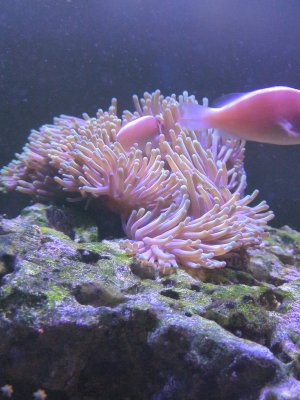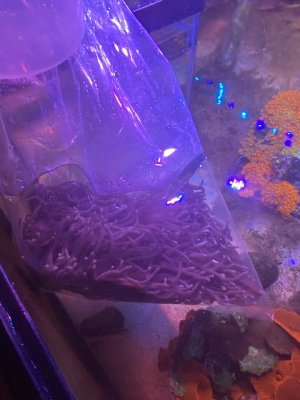In my experience, once healthy a mag is no more difficult than an LTA or any other anemone for that matter. The struggle is getting them in healthy & keeping them that way.
Mags have Vibrio colonies on their feet, which is why they don't ship very well as it starts infecting them when they get stressed. Tackling the vibrio first thing is crucial. @orionN on R2R is considered the expert on this topic. I won't get into Cipro here because he, and several other mag experts, have begun backpedaling and now say that Cipro is a last resort drug.
I will say that source matters, and light intensity matters more. Most mags that show up at your LFS are pretty much goners unless treatment is started the day they arrive. Me and
@enderg60 got ours from Pacific East Aquaculture, where Dr. Mac keeps them in a greenhouse for months before offering them for sale. I never needed to treat mine with Cipro because it was already in good condition, I believe Ender did though.
Light is the most important part. Even a perfectly healthy mag will get stressed, and then sick again, in low light. The whiter the better with mags, and if they can reach the glass of the aquarium they will usually climb it to reach higher light. A large flat pedestal of rock is the best choice for keeping them in place. I have seen people use plant grow lights over their mags in otherwise blued out reefs. Light strength needs to be slowly ramped up to the desired intensity.
Flow is likewise very important and should be fairly high. If you see tentacles whipping in the current every few seconds, that's perfect. Each nem will have it's personal preferences.
Feeding should be done every 1-2 weeks with salmon or other fatty fish. (Always use human grade seafood, as anything else (including frozen fish food) is sprayed with preservatives at the dock.) Food pieces should be as long as the nems mouth is wide and should also be soaked in Aminos. My mag shrivels up when I feed it pellet or flake foods, may just be personal preference though.
I would suggest keeping it clown-free for the first two or three weeks so it can get settled in. The constant activity of clowns can be too much for a freshly shipped nem to handle.
In regards to cohabitation, I have heard that BTAs are much more aggressive but have never done it myself to be sure. @eagle-steve and @seancj on R2R have a lot of info on this topic.
Color wise, most are combos of tan, green, yellow, brown or white, with many different foot colors. Mine is black with green tips and a yellow foot. The most sought after morph is tan with purple base, and you'll usually pay a fair bit more for these.
Overall, they are very hardy considering that their particularities are met. These are reef crest animals that need reef crest conditions to thrive.
Hope this mini article helps!! Good luck and keep us in the loop if you decide to get one or not.


